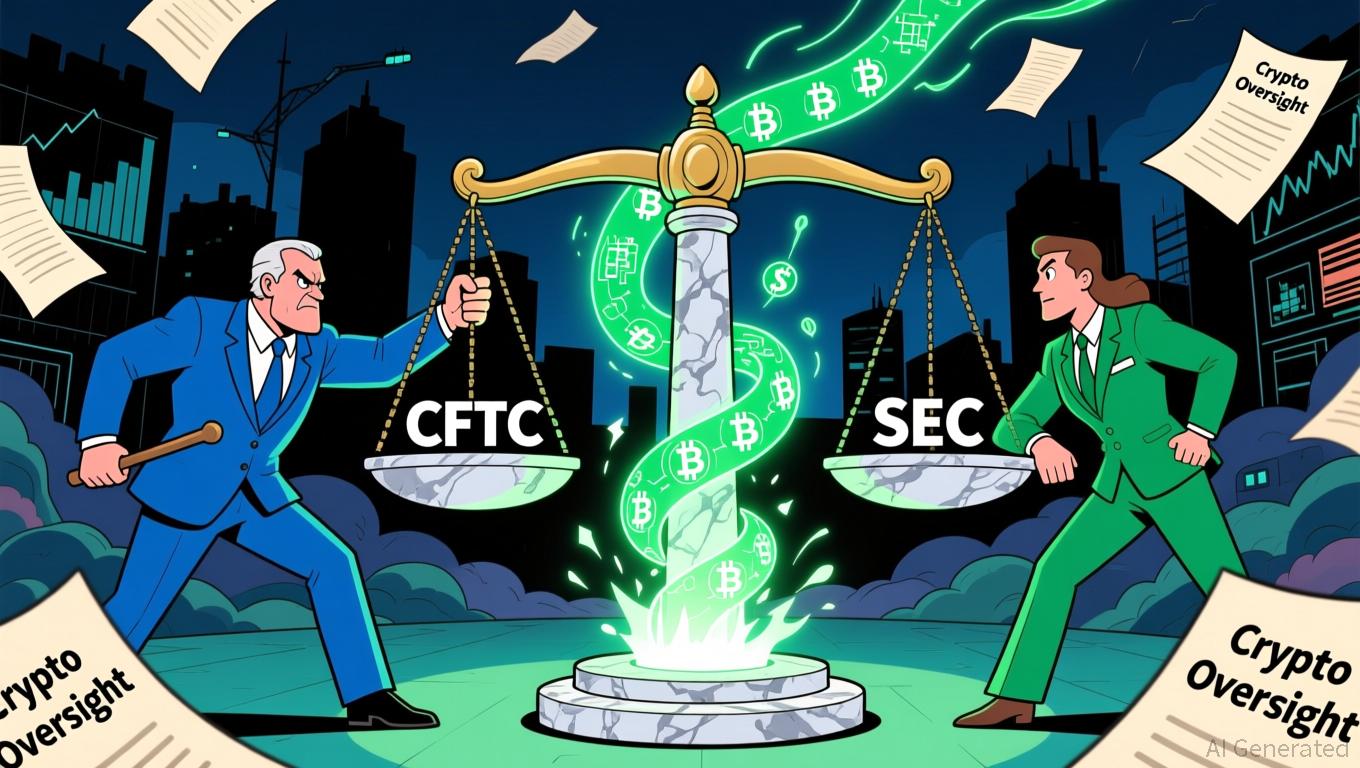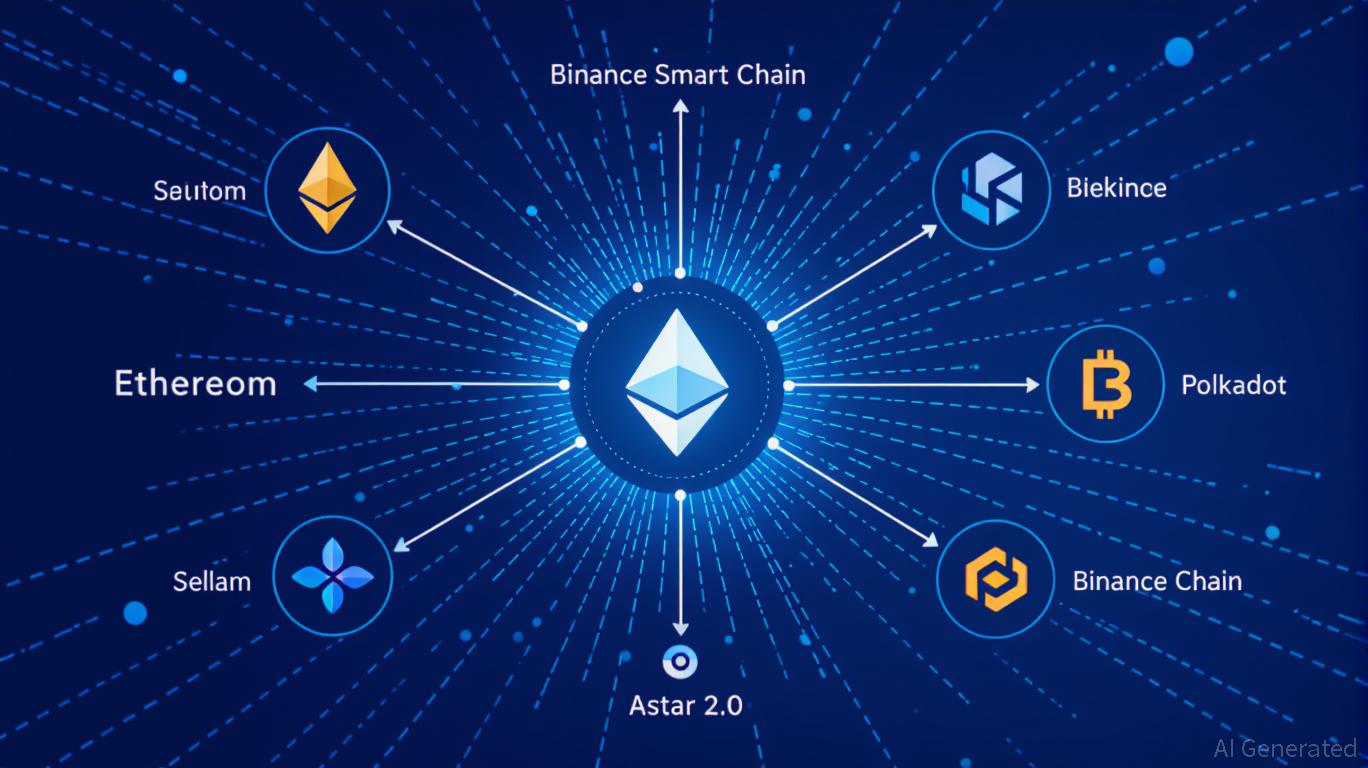NYC Mayoral Election: The Role of Prediction Markets Sparks Discussion Among Democrats
- Zohran Mamdani, NYC mayoral race frontrunner, holds 93-95% victory odds via prediction markets, backed by Obama but facing intra-party concerns over his progressive policies. - His affordability-focused platform—rent freezes, free transit, wealth taxes—energizes progressives while drawing Republican attacks and fears of emboldening conservatives. - Prediction markets ($397M traded) now shape public discourse, with critics warning they blur financial speculation and democratic debate through viral social
Zohran Mamdani, the leading Democratic candidate in New York City's mayoral contest, is far ahead in both polling and betting markets, with Kalshi and Polymarket giving him a 93% and 95% likelihood of winning, respectively, as of November 3, according to
Mamdani’s campaign, which focuses on affordability and redistributing wealth, has energized progressives in the city. His plans—such as freezing rents on stabilized apartments, making public transit free, and imposing a 2% tax on incomes above $1 million—have sparked both support and criticism. Although Obama stopped short of a formal endorsement during their November 1 conversation, he commended Mamdani’s “remarkable” campaign and offered to be a “sounding board” if Mamdani is elected, according to a

After losing the primary, Cuomo is running as an independent, presenting himself as a moderate choice. The latest polls show Mamdani with a strong lead, with Quinnipiac University putting him at 43% compared to Cuomo’s 33%, and Republican Curtis Sliwa at 14%, according to
The mayoral race has also highlighted the rapid rise of prediction markets. On Polymarket, where users can trade on election results using cryptocurrency, $397 million has been traded on this race alone, with over $123 million bet on Mamdani’s success, according to
Some critics warn that these platforms may blur the line between financial speculation and genuine public sentiment, potentially distorting democratic debate. Analysts observe that viral market updates on social media can reinforce certain narratives, sometimes creating self-fulfilling prophecies as both traders and voters respond to changing odds, as noted in the Forbes analysis. “Prediction markets weren’t intended to sway elections,” one observer remarked, “but when millions are wagered, the distinction between information and influence becomes unclear.”
With nearly 735,000 early votes already cast—exceeding the total from 2021—Mamdani’s grassroots movement seems set to benefit from high turnout among young and progressive voters. If elected, he would become New York’s first Muslim mayor and the city’s second-youngest ever, according to Newsweek. However, the implications go beyond City Hall: a Mamdani victory could challenge the Democratic Party’s ability to balance progressive momentum with national strategy, while a rare three-way finish would reflect shifting trends in urban politics.
As the campaign enters its final hours, the interaction between prediction markets, campaign messaging, and voter decisions highlights a new phase in electoral politics—one where anticipation and speculation play an ever-greater role in shaping outcomes.
Disclaimer: The content of this article solely reflects the author's opinion and does not represent the platform in any capacity. This article is not intended to serve as a reference for making investment decisions.
You may also like
Bitcoin News Update: CFTC's Broader Role in Crypto Regulation Ignites Discussion on Clearer Rules
- U.S. lawmakers propose expanding CFTC's crypto oversight via a bill reclassifying spot trading, diverging from SEC's enforcement approach. - Harvard University invests $443M in BlackRock's IBIT ETF, reflecting institutional confidence in crypto as a legitimate asset class. - DeFi projects like Mutuum Finance raise $18.7M in presales, leveraging regulatory momentum and transparent on-chain credit systems. - RockToken's infrastructure-backed crypto contracts attract long-term investors with structured yiel

DASH Aster DEX's Latest On-Chain Growth and What It Means for DeFi Liquidity
- DASH Aster DEX leads 2025 DeFi shift with hybrid AMM-CEX model and multi-chain support (BNB, Ethereum , Solana), boosting TVL to $1.399B and Q3 daily trading volumes of $27.7B. - Platform's 1,650% ASTER token price surge post-TGE attracted 330,000 new wallets, with 94% of BSC-USD volume ($2B/day) driving institutional adoption via Binance/YZi partnerships. - ASTER token mechanics enable 80% margin trading, 5-7% staking rewards, and governance rights, while annual 5-7% fee burns create scarcity and align

Astar 2.0: Leading a New Generation of DeFi and Cross-Chain Advancements
- Astar 2.0 introduces a zkEVM mainnet and cross-chain interoperability, slashing gas fees and enabling 150,000 TPS with 2025 scalability goals. - Strategic partnerships with Mazda, Japan Airlines, and Sony demonstrate blockchain's real-world applications in logistics, loyalty programs, and digital asset tokenization. - Q3 2025 data shows $2.38M DeFi TVL growth and 20% active wallet increase, alongside a $3.16M institutional ASTR token acquisition. - The platform aims to solidify its role as a foundational

Aster DEX Introduces New On-Ramp: Transforming Retail Participation in DeFi
- Aster DEX integrates institutional-grade custody and privacy tech (zero-knowledge proofs) to bridge retail-institutional DeFi gaps via BNB Chain partnerships. - TVL surged to $2.18B by late 2025 through yield-bearing stablecoins and hidden orders, attracting both retail and institutional liquidity. - Despite compliance gaps and wash trading concerns, Aster's Binance alignment and Coinbase listing signals growing institutional validation.
